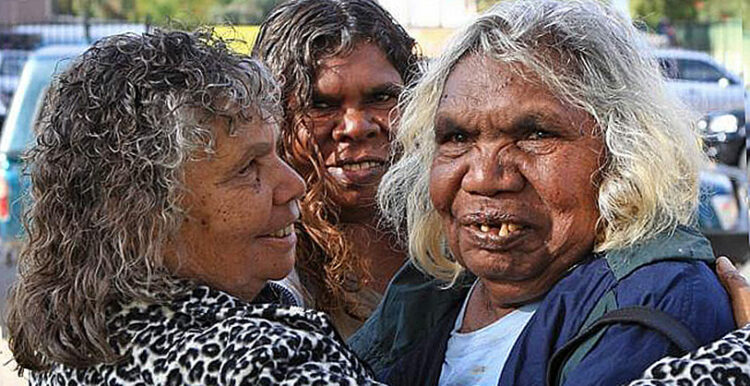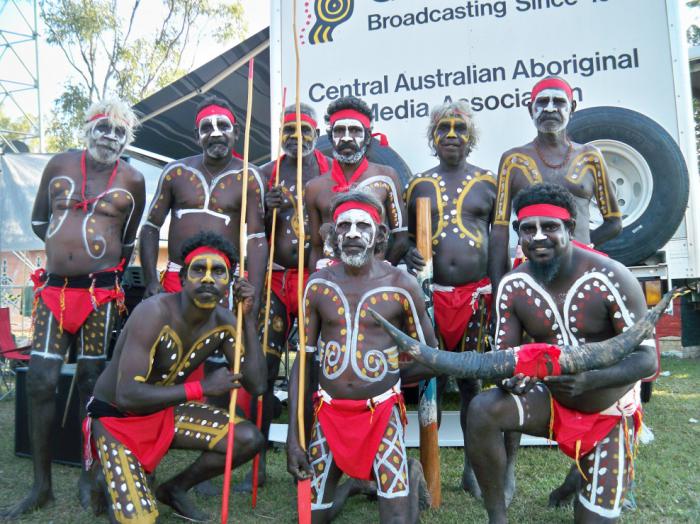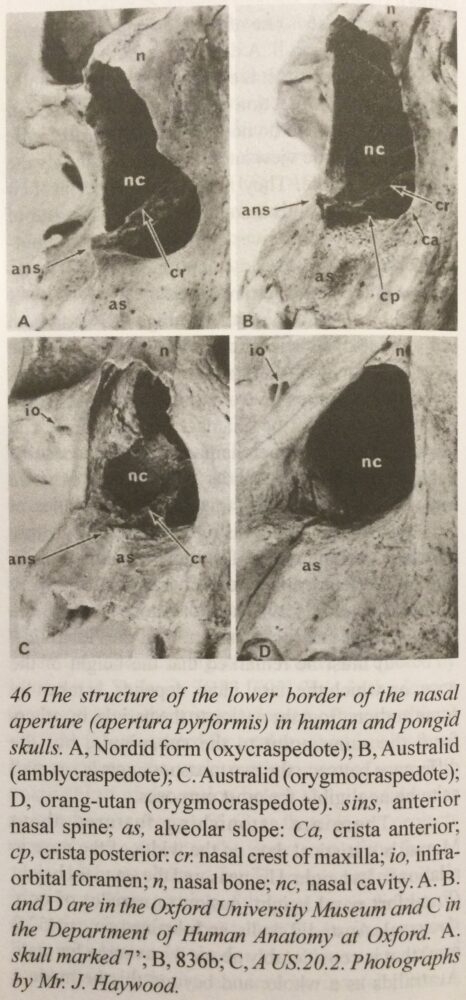Australoid Skull Features Prove Deep Racial Differences
by Ryan Cavallius
THE MISTAKEN NOTION that human racial differences are only ‘skin deep,’ while unfortunately still popular today, has in fact been long ago refuted by research and observation in a wide range of professional fields. One example comes from the science of anthropology. In his landmark book Race, which debuted in 1974, former Oxford University professor Dr. John Baker included a very informative chapter on the Australoids, whom he called “Australids.”1 Baker’s discussion of the relevant data contained a thorough description of the Australoid skull of which certain points should be especially noted, for while his work is unfortunately not recent, it remains very informative and retains its importance today. The crux of the matter is that Australoid skulls possess many notable features which distinguish them from other races including, but not limited to, their shape and size — and belief in a biological equality between the races simply cannot be seriously maintained in the face of such long-standing scientific data.
To begin with, Australoids tend to be dolichocranial.2 This means that their skulls are a bit narrow according to the cranial index, which expresses the breadth of a skull as a percentage of its length. The average length of the Australoid skull is given to be 188 mm, with a cranial index of only about 71. The latter is near the cranial index of the European of Nordic subrace, but much narrower than that of the Alpine whose average cranial index is around 85. Overall, Australoid skulls tend to be wide below and relatively narrow higher up, but their mean height is somewhat low.
From the superior view, the average Australoid skull appears long-ovoid.3 A lateral view from either side reveals a markedly receding forehead running down into an imposing maxilla and mandible, a condition described by former Harvard University professor Earnest Hooton as “accentuated total facial prognathism.”4 It certainly is that, at least in some cases, for the degree of Australoid prognathism is measurably greater than that of any other race.5 The anterior view shows a pronounced sagittal ridge with both sides of the skull top sloping quite noticeably to the sides. As mentioned, the cranium is often widest in the lower half, so the walls of the skull slope outwards. Baker noted that this is a “typically pithecanthropine character” seldom seen in men of other races.6
Though their capacities are small (brain size of only approximately 1225 cc, compared to 1282 cc for Africans and 1369 cc for Europeans),7 Australoid brain-cases are thicker on average than those of any other race. They often reach 10 mm or more, which is about twice as thick as those of most non-Australoids. With this thickness comes added weight; the bones of their cranial vaults are heavy, as are their lower jaws which are heavier than those of Europeans by a significant percentage. Baker noted that the thickness of the Australoid brain-case is “equal” to that of Pithecanthropus, better known as Homo erectus today.8
Along with the stark prognathism, unusually prominent brow ridges are a common racial trait among the Australoids and are considered one of the most recognizable features of their skulls.9 The ridges run often continuously with one another across the glabella, and when the skull is viewed laterally they appear quite pronounced above the prognathous lower part of the face. A closer inspection of the facial bones reveals the Australoid’s lack of a pronounced ridge in the nasal aperture, which may be considered an even more interesting racial trait as it is especially primitive. In Caucasoids, this ridge joins the anterior nasal spine in the middle line and separates the nasal cavity from the sloping surface of the maxilla that runs down towards the teeth. In chimpanzees, orangutans, Old World monkeys, and Australoids it is conspicuously absent.10
The anthropological record clearly shows that Australoid skulls can be distinguished from those of other races by their size, shape, thickness, and even certain racially-unique marks. Each skull is rather long and marked by noticeable prognathism, a sloping forehead, and a pronounced sagittal ridge atop the head, not to mention protruding brow ridges and an “excavated” nasal cavity. In many of their features, Australoids more closely approximate nonhuman primates or the extinct Homo erectus than they do other races of man. This proves that human racial differences go well beyond skin color and refutes the popular belief in an “equality” of the races. For “equal” means, at bottom, “the same” – and the races of man are far from the same, according to science.
NOTES
1. 3rd ed. (Burlington, Iowa: Ostara Publications, 2016), 168 et seq.
2. Ibid., 174.
3. Baker, 173. Cp. Dr. Rae Osborn, “Difference Between Aboriginal Skull and Caucasian Skull,” http://www.differencebetween.net/science/difference-between-aboriginal-skull-vs-caucasian-skull/. Accessed 12/10/2022.
4. Up from the Ape (New York: Macmillan, 1931), 517.
5. Baker, 174.
6. 173.
7. Richard Lynn, Race Differences in Intelligence: An Evolutionary Analysis, 2nd ed. (Arlington, Virginia: Washington Summit Publishers, 2015), 286.
8. 173.
9. Ibid. Cp. Dr. Rae Osborn, “Difference Between Aboriginal Skull and Caucasian Skull,” http://www.differencebetween.net/science/difference-between-aboriginal-skull-vs-caucasian-skull/. Accessed 12/10/2022.
10. Baker, 175-6.
* * *
Source: Author









Excellent article, undeniable proof we are not the same.
Yes. Racial differences do exist. MS is a least twice as common in women as it is in men. While it can strike people of any race, Caucasians appear to be most at risk. (Source: Webb Md.) Thyroid cancer incidence rates vary by both sex and race, with incidence being nearly three times higher in women than in men and nearly twice as high in Whites as in Blacks. (Source: National Cancer Institute. Current data indicates that White men and women are about twice as likely to develop ALS as Black men and women. the disease is more common among non-Hispanics. (Source: ALS Association) Non- Hodgkin lymphoma is the seventh most common cause of cancer-related deaths in the United States. The risk of developing non-Hodgkin lymphoma increases with age and… Read more »
Thank you Mr. Cavallius. I don’t know how they continue to deny the biological reality of race. Kevin did a great 3 part ADV on this very subject. It was definitely one of my favorites.
https://nationalvanguard.org/2014/12/biological-reality-part-1/
Keep up the great work!